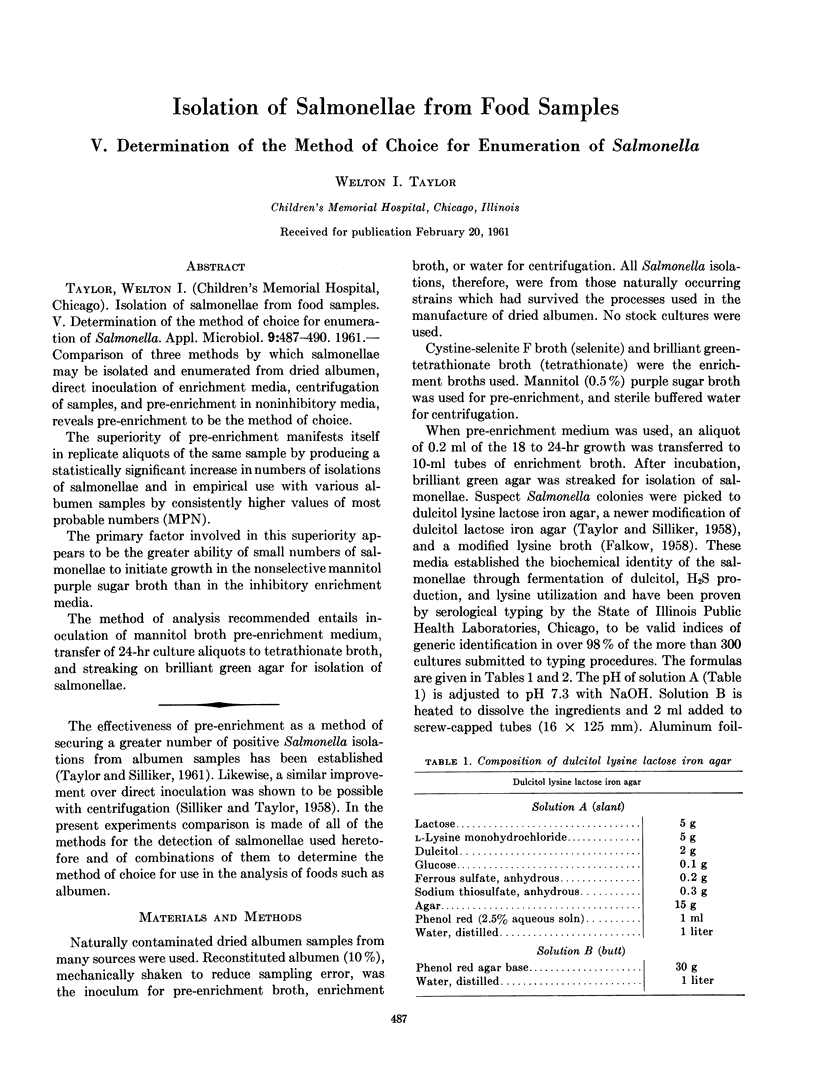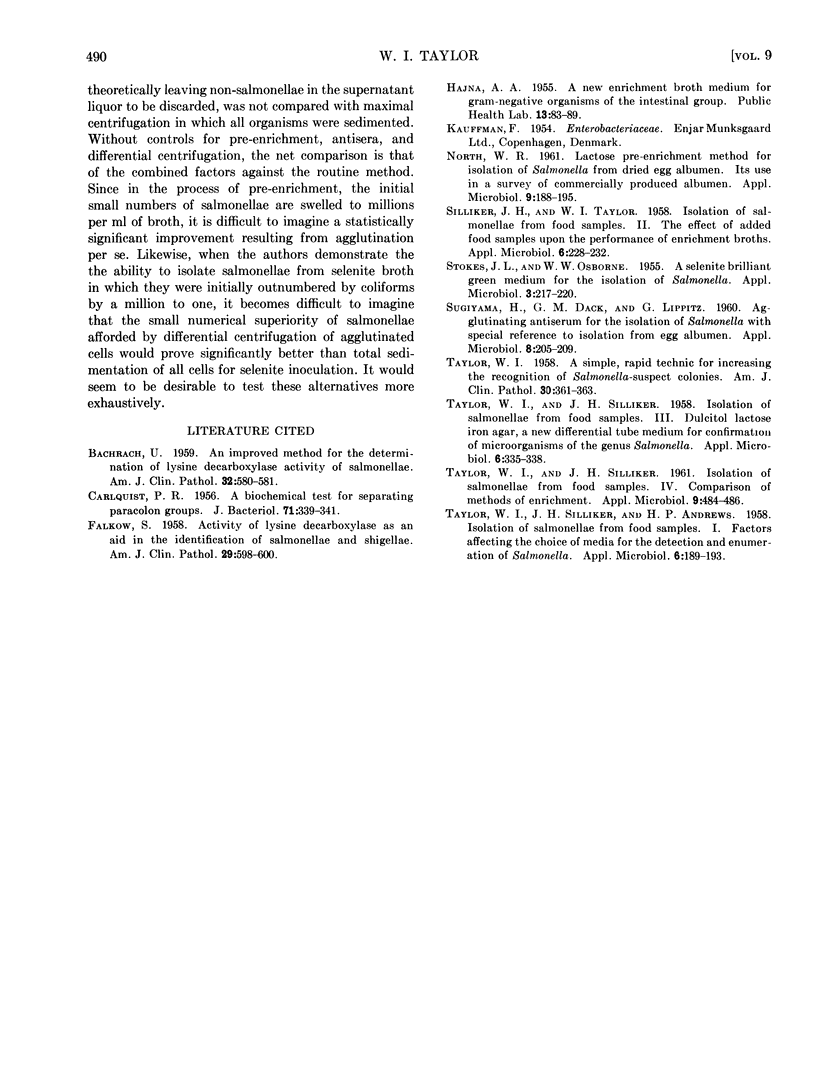Abstract
Comparison of three methods by which salmonellae may be isolated and enumerated from dried albumen, direct inoculation of enrichment media, centrifugation of samples, and pre-enrichment in noninhibitory media, reveals pre-enrichment to be the method of choice.
The superiority of pre-enrichment manifests itself in replicate aliquots of the same sample by producing a statistically significant increase in numbers of isolations of salmonellae and in empirical use with various albumen samples by consistently higher values of most probable numbers (MPN).
The primary factor involved in this superiority appears to be the greater ability of small numbers of salmonellae to initiate growth in the nonselective mannitol purple sugar broth than in the inhibitory enrichment media.
The method of analysis recommended entails inoculation of mannitol broth pre-enrichment medium, transfer of 24-hr culture aliquots to tetrathionate broth, and streaking on brilliant green agar for isolation of salmonellae.
Full text
PDF



Selected References
These references are in PubMed. This may not be the complete list of references from this article.
- BACHRACH U. An improved method for the determination of lysine decarboxylase activity of Salmonellae. Am J Clin Pathol. 1959 Dec;32:580–581. doi: 10.1093/ajcp/32.6_ts.580. [DOI] [PubMed] [Google Scholar]
- CARLQUIST P. R. A biochemical test for separating paracolon groups. J Bacteriol. 1956 Mar;71(3):339–341. doi: 10.1128/jb.71.3.339-341.1956. [DOI] [PMC free article] [PubMed] [Google Scholar]
- FALKOW S. Activity of lysine decarboxlase as an aid in the identification of Salmonellae and Shigellae. Am J Clin Pathol. 1958 Jun;29(6):598–600. doi: 10.1093/ajcp/29.6_ts.598. [DOI] [PubMed] [Google Scholar]
- NORTH W. R., Jr Lactose pre-enrichment method for isolation of Samonella from dried egg albumen. Its use in a survery of commercially produced albumen. Appl Microbiol. 1961 May;9:188–195. doi: 10.1128/am.9.3.188-195.1961. [DOI] [PMC free article] [PubMed] [Google Scholar]
- SILLIKER J. H., TAYLOR W. I. Isolation of salmonellae from food samples. II. The effect of added food samples upon the performance of enrichment broths. Appl Microbiol. 1958 Jul;6(4):228–232. doi: 10.1128/am.6.4.228-232.1958. [DOI] [PMC free article] [PubMed] [Google Scholar]
- STOKES J. L., OSBORNE W. W. A selenite brilliant green medium for the isolation of Salmonella. Appl Microbiol. 1955 Jul;3(4):217–220. doi: 10.1128/am.3.4.217-220.1955. [DOI] [PMC free article] [PubMed] [Google Scholar]
- SUGIYAMA H., DACK G. M., LIPPITZ G. Agglutinating antiserum for the isolation of Salmonella with special reference to isolation from egg albumin. Appl Microbiol. 1960 Jul;8:205–209. doi: 10.1128/am.8.4.205-209.1960. [DOI] [PMC free article] [PubMed] [Google Scholar]
- TAYLOR W. I., SILLIKER J. H., ANDREWS H. P. Isolation of Salmonellae from food samples. I. Factors affecting the choice of media for the detection and enumeration of Salmonella. Appl Microbiol. 1958 May;6(3):189–193. doi: 10.1128/am.6.3.189-193.1958. [DOI] [PMC free article] [PubMed] [Google Scholar]
- TAYLOR W. I., SILLIKER J. H. Isolation of Salmonellae from food samples. III. Dulcitol lactose iron agar, a new differential tube medium for confirmation of microorganisms of the genus Salmonella. Appl Microbiol. 1958 Sep;6(5):335–338. doi: 10.1128/am.6.5.335-338.1958. [DOI] [PMC free article] [PubMed] [Google Scholar]
- TAYLOR W. I., SILLIKER J. H. Isolation of Salmonellae from food samples. IV. Comparison of methods of enrichment. Appl Microbiol. 1961 Nov;9:484–486. doi: 10.1128/am.9.6.484-486.1961. [DOI] [PMC free article] [PubMed] [Google Scholar]


